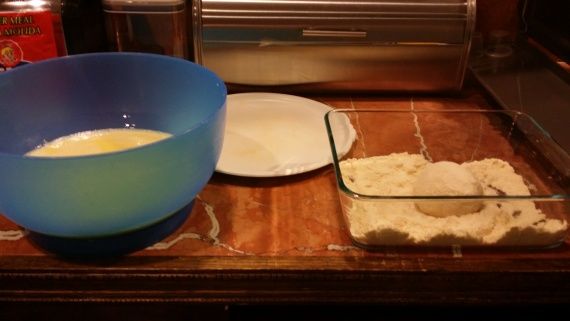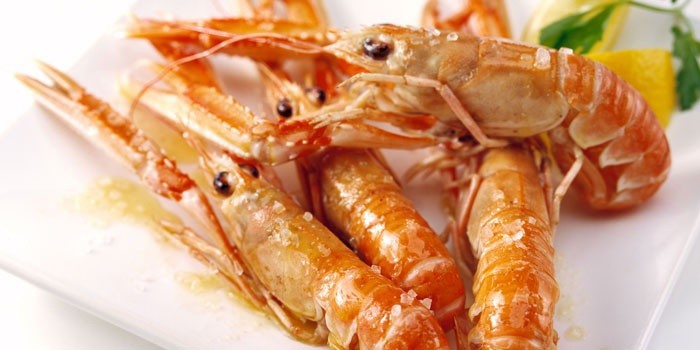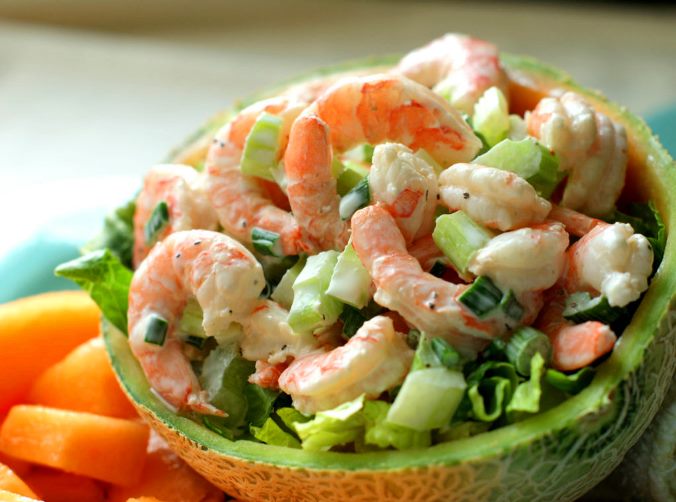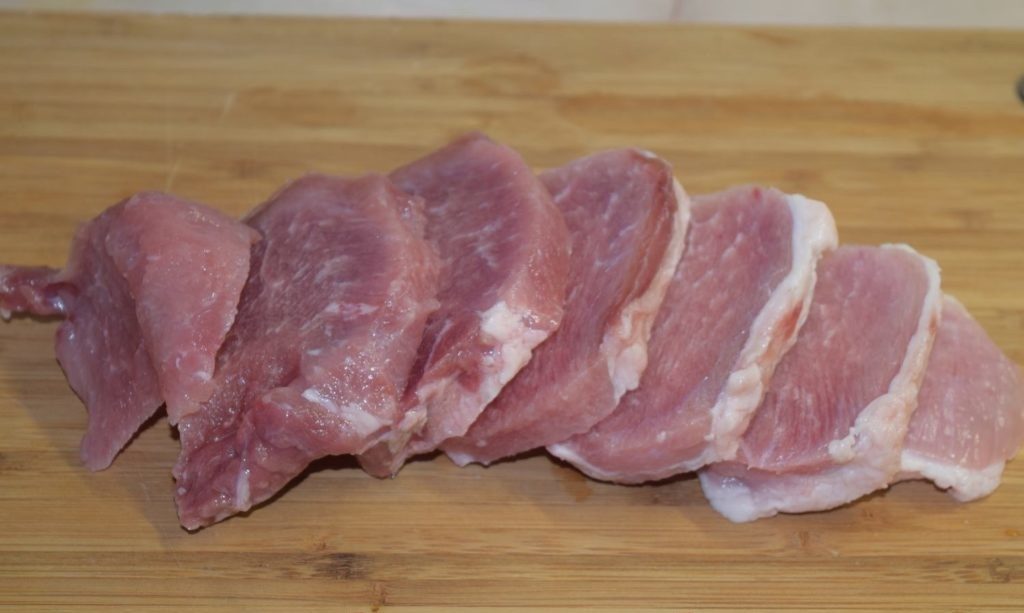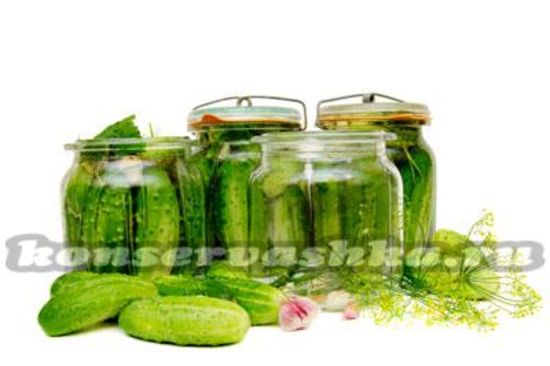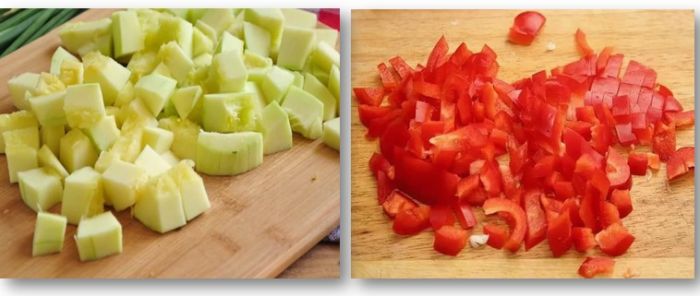Adjika from tomato and pepper. Adjika from tomatoes and garlic
Seasoning from tomatoes, hot pepper and garlic has long been used by culinary experts from different countries. Thanks to the spicy sauce, meat and fish dishes acquire a deeper, more expressive taste.
No cooking
Adjika is an amazing seasoning. It can be stored both raw and boiled, and heat treatment does not affect the taste. Of course, seasoning without cooking is rich in a large number of vitamins and minerals, although shelf life is reduced compared to a cooked product.
The main property of hot sauce is the ability to stimulate appetite. Therefore, for people who are on a diet, this product will not be useful in losing weight. Despite the presence of burning constituents that stimulate digestion, and low calorie content (59 kcal per 100g), this supplement will force you to absorb more food than is required to satisfy hunger.
Raw adjika classic
 Strictly speaking, initially classical adjika did not include tomatoes at all: Caucasian seasoning included red pepper, grated with herbs. But as the sauce spreads across countries and continents, the main option began to look exactly as described in our recipe.
Strictly speaking, initially classical adjika did not include tomatoes at all: Caucasian seasoning included red pepper, grated with herbs. But as the sauce spreads across countries and continents, the main option began to look exactly as described in our recipe.
Ingredients:
- red tomatoes - 1.5 kg;
- garlic - 200 g;
- hot pepper - 3 small or 2 medium pieces;
- bell pepper - 2 red copies;
- onion-turnip - 2 large onions;
- vegetable oil - 70 ml;
- 9% vinegar - 60 ml;
- salt - 25 g.
Choose ripe red tomatoes, rinse and remove the dense core. Clean peppers clear of seeds. We cut the peeled onions into pieces so that it passes unhindered into the meat grinder. Remove dry flakes with a share of garlic. We send prepared vegetables to the meat grinder.
Thoroughly mix the crushed products with your hands or a wooden spoon, pour in the oil, salt and season with vinegar. Mix all the ingredients in the sauce again. The product is ready for use and storage. The mixture is laid out in sterilized glass jars and kept under a polyethylene lid in a refrigerator.
Adjika is an excellent means of preventing colds. The product contains vitamins such as PP, A, C, and B vitamins. Of the minerals, iodine, potassium, phosphorus, calcium, copper, chlorine, and 9 more elements are represented. Such a composition provides the body's resistance to viruses and generally strengthens its protective functions.
Raw adjika with horseradish
 One of the most popular and simple recipes for cooking adjika includes only 4 products: tomatoes, garlic lobes, horseradish root and salt. The simplicity of the dish also consists in the fact that the sauce does not require additional heat treatment.
One of the most popular and simple recipes for cooking adjika includes only 4 products: tomatoes, garlic lobes, horseradish root and salt. The simplicity of the dish also consists in the fact that the sauce does not require additional heat treatment.
Ingredients:
- ripe tomatoes - 1.5 kg;
- horseradish - 100 g of root;
- garlic - 6 shares;
- salt - 20 g.
We wash the tomatoes under running water. We scald with boiling water and remove the skin burst from high temperature. Remove the dense core. The horseradish roots are cleaned from dark spots, we scrape off the outer layer with a knife to white. We spread both products on a napkin so that excess moisture is gone.
We clear garlic from dry protective layers, rinse in running water. Grinding the components of the recipe is recommended only in a meat grinder (mechanical or electrical): some blenders may not be able to cope with the hard roots of horseradish. Salt the vegetables after they have passed through the grill of the meat grinder. Mix the resulting solution until the salt is completely dissolved.
We spread the sauce in dry chilled jars that have been sterilized. We store on the top shelf of the refrigerator.
Horseradish roots are best prepared immediately before mixing with other vegetables. The cleaned parts in the open air quickly become airy, the root itself will fade. To prevent this from happening, until prepared, the prepared ingredient should be dipped in ice water.
Georgian raw
 The Georgian additive is sent to meat and fish dishes both at the stage of their creation and at the time of readiness. The highlight of the sauce is the presence of herbs that grow in abundance in the Caucasus and are used in Georgian national cuisine.
The Georgian additive is sent to meat and fish dishes both at the stage of their creation and at the time of readiness. The highlight of the sauce is the presence of herbs that grow in abundance in the Caucasus and are used in Georgian national cuisine.
Ingredients:
- red tomatoes - 2 kg;
- bell pepper - 3 red pcs .;
- hot pepper - 2 pods;
- garlic - 4 heads;
- dried cilantro - 10 g;
- hops-suneli - 1 packet;
- salt - 25 g.
We wash the pods of hot pepper and dry for 10 hours on a towel. After this time, we remove from each stalk and seeds. We also act with fresh sweet pepper: peel and cut in half. Break the heads of garlic into slices, peel them and rinse them in water. We wash the tomatoes in water, scald with boiling water and remove the skin.
Grind peppers and tomatoes in a blender, finely chop the garlic with a knife. Add dried cilantro, suneli hops and salt. Mix all the products. To avoid burning your hands with bitter pepper, you can work with gloves. The shelf life of such a seasoning is four, a maximum of four and a half months in the refrigerator.
Georgian adjika has a huge number of options. Many of them are created on the basis of wine vinegar. Separately, it is worth mentioning the green Georgian adjika, which includes only herbs and green pepper pods. Unlike the Abkhazian variety, walnuts are never found here.
With cooking
 Boiled adjika is ready to eat for a whole year if it is cooked at the time of preparation. The severity of such a seasoning does not depend on the cooking time, but on the amount of hot pepper in the composition of the product.
Boiled adjika is ready to eat for a whole year if it is cooked at the time of preparation. The severity of such a seasoning does not depend on the cooking time, but on the amount of hot pepper in the composition of the product.
Adjika is not the safest product. Its piquancy and pungency is not the best way to affect the health of people with stomach problems. Any form of gastritis instantly responds to seasoning. Additive to meat or fish should not be consumed during a failure of the liver or kidneys. At risk are also children under 13 years old and pregnant women.
Boiled adjika for the winter
 The cooking option is primarily suitable for residents of urban apartments. Where there is no cool cellar, and the refrigerator is occupied with pots and shop delicacies, boiled winter preparations can be stored in an ordinary closet.
The cooking option is primarily suitable for residents of urban apartments. Where there is no cool cellar, and the refrigerator is occupied with pots and shop delicacies, boiled winter preparations can be stored in an ordinary closet.
Ingredients:
- ripe tomatoes - 2 kg;
- garlic - 300 g;
- bell pepper - 1 kg;
- hot pepper - 3 pods;
- vegetable oil - 100 ml;
- parsley - 50 g;
- dill greens - 50 g;
- salt - 15 g;
- sugar - 10 g.
We wash the vegetables. In tomatoes, remove the core, in peppers - seeds. We send both to the blender, chop. Cook over low heat for 50-60 minutes.
Grind peeled garlic and hot pepper. Add finely chopped greens to this mixture. After an hour of boiling, add the hot mixture to the tomatoes and bell pepper. Pour in oil, salt and add sugar. The resulting solution simmers over low heat for half an hour.
We sterilize glass jars and, not allowing to cool, we fill with freshly prepared adjika. We cork with tin lids, turn over, cover with a blanket or blanket until it cools completely.
Not every tomato variety is suitable for making the sauce. To make the consistency thick, saturated, the choice should be stopped on fleshy, low-water specimens. Most often, housewives choose the grade Cream for cooking adjika. But besides this variety, Pink Flamingo, President, Gift of the Volga region, Big Beef are suitable for seasoning. They are characterized by a high sugar content, delicate peel that can not be removed, and scanty filling with small seeds.
With carrots
 Oddly enough, spicy sauce, which includes root vegetables, also belongs to adjika. Mistresses are experimenting with different products - turnips and beets, celery root and carrots. The most popular part of these types of blanks remains bright orange carrots.
Oddly enough, spicy sauce, which includes root vegetables, also belongs to adjika. Mistresses are experimenting with different products - turnips and beets, celery root and carrots. The most popular part of these types of blanks remains bright orange carrots.
Ingredients:
- tomatoes - 1.5 kg;
- garlic - 7 shares;
- bulgarian pepper - 4 pcs.;
- hot pepper - 1 pod;
- turnip onion - 2 small or 1 large;
- carrots - 2 medium;
- lean oil - 150 ml;
- vinegar (9%) - 30 ml;
- salt - 15 g;
- granulated sugar - 50 g.
We prepare pure vegetables for heat treatment: remove the stalks and core from tomatoes and peppers, peel the garlic and carrots. Grind dense ingredients in a food processor. Minced vegetables boil over low heat for half an hour. In order not to burn, do not forget to stir with a wooden spatula.
After 30 minutes, salt, add oil and add granulated sugar. Bring the mixture to a boil and simmer for an additional 5 minutes. We pour the resulting product into disinfected cans, roll it up with lids, turn it over and wrap it with heat until it cools completely.
 A spicy mixture of spices and vegetables, at first glance, does not require special knowledge. However, there are nuances that will help to make the taste more delicate or, on the contrary, tart, allowing the spices to reveal the aroma brighter and increase the shelf life of the product.
A spicy mixture of spices and vegetables, at first glance, does not require special knowledge. However, there are nuances that will help to make the taste more delicate or, on the contrary, tart, allowing the spices to reveal the aroma brighter and increase the shelf life of the product.
- Adjika is made from ripe vegetables with no signs of disease or harmful insect damage. The presence of damaged copies can provoke premature souring of the product.
- An insufficient amount of salt, garlic and horseradish roots, which are natural preservatives, can also cause a “floated” adjika.
- The dishes for storing the sauce should be perfectly clean. It can be disinfected with steam over boiling water, high temperature in the oven or using an electric field in the microwave.
- Raw adjika is stored exclusively in cool places: a refrigerator or a cellar. Vitamins last longer in the dark. If the seasoning has cooked for at least 20 minutes and has been hot sealed with a tin lid, it can be stored at room temperature in a dark room.
- The minimum composition of adjika is tomatoes, peppers, garlic and salt. Spice herbs (cilantro, dill, fenugreek, celery, basil, marjoram, etc.), as well as vegetables (sweet and burning peppers, carrots, onions) and fruits (apples, plums) help diversify the flavor of seasoning.
- If the herbs and seeds of the ingredients are calcined in a pan, the essential oils will be released and the mixture will become truly fragrant.
- Pepper seeds give a special spice to the sauce. If the product is made on the basis of green fruits, the taste will be more delicate and less sharp.
- So that the juice of hot pepper does not irritate the skin of the hands, work with the vegetable should be in disposable gloves.
Conclusion
A mixture of spices and salt, which was originally called adjika, today is a culinary supplement of several types. It can be a mixture of salt, dried herbs and red pepper. As a rule, such a filler is used as a marinade component for poultry and meat before frying or stewing. It can be a sauce of tomatoes, sweet peppers and garlic, which is served with already cooked dishes. Or it may come close to salads, including ingredients such as carrots, walnuts and coarsely chopped greens. In any case, no matter which recipe is chosen, seasoning will make the treat tasty and healthy.
During the existence of adjika, inventive housewives have come up with hundreds of recipe options. Thanks to them, instead of the traditionally red Caucasian seasoning, green and orange-brown appeared, spicy and not, from freshly grated and stewed vegetables. The set of products for making the sauce has also changed. It is difficult to imagine a modern sauce without tomatoes, although there were no tomatoes in the original recipe.
We will also move away from the classic options and try out recipes with tomatoes. It is the tomatoes that give the sauce a sour-sweet taste, which makes the seasoning universal.
From tomatoes with peppers for the winter at home
The taste is not very pronounced. It is suitable for those who do not like too fragrant seasonings.
You will need:
- tomatoes - 5 kg;
- fresh hot pepper - 4-10 pcs., sweet - 1 kg;
- carrots - 1 kg;
- onions - 500 gr.;
- garlic - 5 heads;
- vegetable oil - 250 ml;
- salt to taste.
Tomatoes, carrots, garlic and onions are peeled, peppers - from seeds. All vegetables are mashed and boiled mass for 2 hours. The resulting sauce is salted, cooled, poured into sterilized jars and rolled up for storage.
The sharpness of the workpiece can be adjusted by changing the amount of garlic and hot pepper. If you remove them completely, you get a universal tomato sauce that can be given to children. However, the shelf life of the product without hot pepper and garlic will be reduced to 1-2 weeks in the refrigerator.
Hot peppers are best cleaned with gloves so as not to burn the skin.
Before cooking, adjika is not salted, the finished product is seasoned. During the cooking process, part of the liquid will evaporate, so the seasoning may turn out to be saline.
DIY horseradish
This option does not require cooking. Horseradish, garlic and hot pepper will serve as excellent preservatives and help maintain the freshness of seasoning.
You will need:
- tomatoes - 5 kg;
- garlic - 5-6 heads;
- sweet pepper - 1 kg; fresh spicy - 1 pc.;
- horseradish - 6 roots;
- salt to taste.
Cooking
All ingredients are cleaned, washed and dried with paper towels. Then they take turns passing through a meat grinder. The resulting mass is salted, mixed and poured into clean, dry jars or bottles.
Cook in a well-ventilated area to protect yourself from the intense smell of horseradish.
Tasty adjika from tomato and garlic for the winter
This is the least spicy of all presented. To taste, the sauce resembles an improved version of the “croaker” and goes well with sandwiches of brown bread and lard and donuts for borsch.
You will need:
- tasty tomatoes - 1 kg;
- sweet yellow or red pepper - 1 kg;
- garlic - 400 gr;
- parsley root - 150 g;
- salt to taste.
Cooking
Tomatoes scalded with boiling water, peeled and cut the stem. Wash peppers, cut them in half and remove seeds. The garlic is peeled, the parsley root is washed and the inedible parts are cut. Prepared vegetables are passed through a meat grinder. The mixture is salted, stirred, covered and left to brew. If the apartment is hot, the container is placed on the floor away from heating appliances.
Adjika from tomatoes for the winter is infused for two days at room temperature. The mixture is periodically mixed, and then poured into cans and sent for storage.
To extend the shelf life, it is better to use rock salt - it is a natural preservative. With conventional iodized salt, the workpiece will be stored less.

With apples
The seasoning is sweetish and well emphasizes the taste of red, grilled, bonfire or in the oven.
You will need:
- tomatoes - 2 kg;
- sweet and sour apples - 1 kg;
- sweet yellow or red pepper, - 1 kg; fresh spicy - 3 pcs.;
- carrots - 1 kg;
- sugar - 250 gr;
- sunflower oil - 250 ml;
- garlic - 200 gr;
- salt.
Vegetables and apples are washed, peeled and seeds removed, and the remaining moisture is removed with a paper towel. Then it is ground in a blender or meat grinder and the mixture is boiled for an hour. After crushed garlic, hot pepper, sugar, salt and sunflower oil are added to the workpiece, they are mixed, boiled and removed from the heat. The cooled sauce is poured into clean jars and rolled up for long-term storage in the basement or refrigerator.
If you want a hotter snack, hot pepper seeds do not need to be cleaned. Grind them with the pulp and add to the sauce.
With vinegar for the winter
You will need:
- tomatoes - 2 kg;
- sweet pepper - 2 kg; sharp - 5 pcs.;
- sweet apples - 1 kg;
- carrots - 1 kg;
- garlic - 200 gr;
- sunflower oil - 1 cup;
- vinegar 9% - 1 cup;
- sugar - 1 cup;
- salt to taste.
Peeled vegetables and apples are chopped in a meat grinder and the mixture is boiled for 1 hour. Then the workpiece is removed from the fire, add butter, sugar, vinegar and finely chopped garlic, salt and mix. Pour into jars, adding on top of 2-3 mm of sunflower oil, and close with plastic lids. Tasty with meat and.
It is better to pour in small containers - 500 or 250 ml. So the sauce can be eaten at a time, in an opened jar it is stored in the refrigerator for no more than 1.5 weeks.
Fragrant adjika from tomatoes for the winter with herbs and spices
This is a very fragrant option for spice lovers. You can change the number of seasonings at your discretion.
You will need:
- tomatoes - 3 kg;
- sweet pepper - 2 kg; spicy - 150 gr;
- garlic - 300 gr;
- vinegar 9% - 125 ml;
- sugar - 125 g;
- sunflower oil - 250 ml;
- mix of fresh herbs (dill, parsley, cilantro, celery) - 200 gr;
- coriander seeds - 10-20 pcs.;
- hops-suneli - 30 gr;
- salt to taste.
Tomatoes and both types of pepper are thoroughly washed, seeds are removed from the latter and vegetables are passed through a meat grinder. Oil is added to the mass and the mixture is boiled for 1 hour, stirring constantly. After being removed from the heat, cool, add chopped garlic, sugar, vinegar and salt. Grind greens and seasonings in a blender, transfer to a workpiece for adjika and let it brew for an hour.
Ready sauce is poured into clean jars and stored in the refrigerator. This adjika is used not only for sandwiches, but also as a seasoning for the preparation of poultry and red meat. For this, the meat is washed, coated with sauce and baked in the oven.
Because of the green, the color will turn brownish. If red sauce is needed, the tomatoes are ripe and fleshy and additionally tint the mixture with tomato paste.
Adjika Nut Recipe
You will need:
- tomatoes - 500 gr;
- walnuts - 400 gr;
- sweet pepper - 200 gr; sharp - 1-2 pcs.;
- garlic - 3 heads;
- green cilantro - 1 bunch;
- sunflower oil - 4 tbsp. l .;
- vinegar 9% - 30 ml;
- salt to taste.
Tomatoes peel stalks, sweet pepper seeds, garlic and walnuts from the husk. Wash vegetables and herbs, grind in a blender or meat grinder, pour oil and vinegar into the mixture, salt and mix.
You can eat adjika right away, for storage you need to pour it into a sterilized container and roll it up. The nutty flavor of the sauce complements meat, snacks and pasta dishes well.
Adjika from tomatoes for the winter may not be rolled up, then it must be stored in the freezer. To do this, it is laid out in plastic containers or bags, frozen and thawed during the winter. The sauce cannot be re-frozen, so it is immediately divided into portions that can be eaten 1-2 times. Defrost in the refrigerator.
DIY plums
Adjika from tomatoes for the winter with plums turns sweet and tender. It goes well with salads of greens, cheese and nuts, emphasizes the taste of game and any other meat.
You will need:
- tomatoes - 0.5 kg;
- plums - 0.5 kg;
- sweet pepper - 0.5 kg; sharp - 2 pcs.;
- garlic - 2 heads;
- sugar - 100 g;
- vinegar 9% - 2 tsp;
- salt to taste.
Wash vegetables and plums and remove excess moisture with paper towels. Tomatoes are peeled from the stalks, cut crosswise, scalded with boiling water and peeled from them. Seeds are removed from sweet pepper, seeds from plums. All but vinegar and salt are put in a saucepan and simmered to simmer. Then turn off the fire, add vinegar and salt, mix and leave the mixture for 2-3 minutes.
The hot billet is poured into sterilized jars, rolled up and the container is placed with the lids down until the adjika cools down. Store seasoning in the basement or in the refrigerator.
Adjika with plums will become even better if you add a few teaspoons of smoked paprika to it. Such seasoning will add haze to the meat and improve the taste of the dish.
Spicy tomato and pumpkin
With pumpkin it turns out spicy and sweet. Eat it with chicken or make pasta-based sauces for pasta.
You will need:
- tomatoes - 500 gr;
- pumpkin - 500 gr;
- apples - 200 gr;
- sweet pepper - 200 gr; sharp - 1 pc.;
- onion - 100 gr;
- lemon - 0.5 pcs.;
- garlic - 1 head;
- greens (basil, parsley, cilantro or mix) - 1 bunch;
- vegetable oil - 50 ml;
- salt to taste.
Vegetables and fruits are washed, apples and peppers are cleaned from seeds, pumpkin - from seeds and peel. Dice the onion. Together with apples, tomatoes, pumpkin and pepper, wrap it in foil and bake it for 20-30 minutes in the oven at a temperature of 180 ° C. Then peel the tomatoes, peppers and apples and grind the baked vegetables and fruits in a blender.
After squeezing lemon juice into the pulp, add the remaining ingredients, grind it again and salt to taste. You can serve the sauce right away. Adjika from tomatoes for the winter rolls up in sterilized jars and keep it in the refrigerator.
You need to choose your favorite proven pumpkin varieties. They can be sweet or fresh, with a pronounced spicy taste or without it - the taste of the sauce will also depend on it.
Of zucchini
The sauce is not very spicy, sour-sweet. It is quickly eaten in combination with bread as an appetizer.
You will need:
- tomatoes - 500 gr;
- zucchini (without peel and seeds) - 2 kg;
- sugar - 250 gr;
- tomato paste - 250 gr;
- vegetable oil - 250 gr;
- garlic - 100 gr;
- bay leaf - 1-2 pcs.;
- vinegar 9% - 60 ml;
- ground red pepper - 1 tsp;
- salt to taste.
Zucchini and tomatoes grind in a meat grinder. The remaining ingredients are added to the pan to them, except for vinegar, salt and pepper, put on fire and stewed for 30-40 minutes after boiling. A couple of minutes before cooking, vinegar is poured into the puree, salt and pepper are put, the bay leaf is pulled out. Hot adjika is poured into sterilized cans, rolled up, allowed to cool upside down and cleaned in a cellar or refrigerator.
The recipe “Adjika from tomatoes for the winter” should be selected based on taste preferences and requirements for shelf life. Sauces that do not require cooking are stored worse. They are best kept in the refrigerator and eat first.
For long storage, ajika from tomatoes is selected for the winter, which is rolled up in sterilized jars in a hot state.
Watch a video on how to cook adjika in Armenian.
A piquant, spicy adjika for the winter, using step-by-step recipes with photos, can be prepared at home by both an experienced hostess and a novice keeper of the hearth. A true Abkhazian or Georgian spicy and aromatic seasoning with a sophisticated and recognizable taste of tomatoes and / or pepper can be prepared for the winter according to a variety of recipes. Such an unusual pasta with spices and herbs will make the taste of many dishes more expressive and interesting.
Adzhika home-made preparations for the winter, according to the recipes proposed here, will not cause difficulties. Remember that the source products can be very different. Spin jars of seasoning can even be made from simple zucchini or apples. Therefore, make blanks for the winter in several ways. Each type of adjika, preserved for future use, can be prepared even by a novice cook using the step-by-step recipes with photos collected here.
Best recipes with photos
The last notes
The traditional homemade adjika preparation based on tomatoes has already bothered my family a little. Therefore, I decided to step back from tradition and prepared for the winter an unusual and very tasty adjika made of plums with the addition of tomato paste. A very convenient recipe. Such a homemade blank does not require long boiling and the products for it are affordable and inexpensive.
There are so many different recipes and ways to make this sauce. You can cook it raw, without cooking. And so do most housewives, as it is simpler and faster. And you can boil, then it will be stored longer. After heat treatment, such a sauce can be stored at room temperature, in the apartment.
I have selected the most interesting options for you, in my opinion. And of course, I tried them all myself. This sauce is great for meat. Even in my family they like to mix it with vegetable side dishes, instead of ketchup.
I already wrote about cooking. But, to be honest, this seemed a little to me and today I decided to supplement your piggy bank with several more options. And also recommend trying to cook wonderful for the winter.
So choose any method you like and make a wonderful sauce for the winter or at the moment.
According to this recipe, you will get a very tasty sauce for the winter. To the best of pungent. If desired, the amount of hot pepper can be reduced, but I put just that much. This sauce is perfect with meat and garnish.
Ingredients:
- Tomatoes - 4 kg
- Garlic - 200 gr
- Bell pepper - 2 kg
- Hot pepper - 6 pcs.
- Sugar - 200 gr
- Vegetable oil - 200 ml
- Salt - 2 tablespoons
- Vinegar 9% - 200 ml
Cooking:
1. Wash the tomatoes and clean the stalks. Pass through a meat grinder. Pour the resulting mass into the pan and place on the stove. Bring to a boil and cook for 20 minutes.

2. While the tomato mass is being cooked, we will take care of the remaining vegetables. Rinse and peel all the peppers. Pass them through a meat grinder, as well as garlic. When the time is right, add the ground vegetables to the tomato mass.
When working with hot pepper, be sure to wash your hands properly afterwards. Or wear gloves.

3. Pour in vegetable oil there, add salt and sugar. Wait for boiling and cook for another 20 minutes. Pour vinegar at the very end, mix and cook for another 2 minutes. Then turn off the fire.

4. Arrange the resulting sauce in sterile jars and tighten the lids. Turn over and wrap in a warm blanket. Leave as it is until it cools. Then put it in a place to store workpieces.

Home adjika for the winter without cooking
In this recipe, unlike the previous one, our snack is very spicy. Therefore, I usually, when serving, dilute it with tomato sauce or ketchup.
Ingredients:
- Tomatoes - 3 kg
- Peeled garlic - 1 cup
- Hot peppers - 2 pods
- Sugar - 1 cup
- Salt - 2-2.5 tbsp
- Vinegar 9% - 1 cup
Cooking:
1. Wash all vegetables. Cut the tomatoes into halves and remove the stalks. Cut the peppers into halves and peel the seeds. Peel the garlic. Pass everything through a meat grinder.

2. Add salt, sugar and vinegar to the resulting mass. Mix everything and leave for 3-4 hours.

3. Then put everything in sterile jars. Screw the boiled lids on and place in a cool dark place.

Adjika recipe from tomato and bell pepper with carrots
A very interesting adjika recipe with carrots and apples. It tastes incredibly delicious sauce. I recommend that you watch this video recipe and try to do it at least once. You will not regret.
Ingredients:
- Tomatoes - 2.5 kg
- Sweet pepper - 1.5 kg
- Carrots - 1 kg
- Apples - 1 kg
- Garlic - 200 gr
- Hot pepper - 6 pcs.
- Sugar - 200 gr
- Salt - 2 tablespoons
- Spices (hops-suneli or coriander) - 1 sachet
- Vinegar 9% - 50 ml
- Vegetable oil - 1 cup
Be sure to try cooking with this recipe. My family is just thrilled. The sauce is moderately spicy, with a sweet and sour taste. Just a jumble.
Fresh adjika from tomato with garlic and horseradish
This sauce is made without preservation, so it is not advisable to store it for a long time. But I usually get such a volume somewhere in a week, so I don’t worry that it will go bad.
Ingredients:
- Tomatoes - 3 kg
- Bell pepper - 3 pcs.
- Garlic - 2 heads
- Horseradish - 20 grams
- Hot pepper (not big) - 1 pc.
- Salt to taste

Cooking:
1. Peel the stalks of the tomatoes and cut into slices. Pepper seeds and cut into slices. Peel the garlic. Peel the horseradish root and cut into several pieces.
2. Scroll all the ingredients through a small hole meat grinder.

3. Pour the sauce into a convenient dish. Add salt, mix and set for 15 minutes.

4. Then pour into clean jars and store in a cool place, such as a refrigerator. Such an appetizer can be eaten immediately, without waiting for the winter.

Spicy adjika made from tomato, garlic and hot chili peppers
For lovers of hot offer this recipe. It is prepared in a raw way and fairly quickly, like all similar options.
Ingredients:
- Tomatoes - 2 kg
- Sweet pepper - 0.5 kg
- Chili pepper - 3-5 pcs.
- Garlic - 5 heads
- Horseradish - 250 gr
- Suneli hops - 1 tablespoon
- Sugar - 1.5 cups
- Salt - half a cup
- Vinegar 9% - half a glass

Cooking:
1. Prepare all products. Cut the tomatoes in half, getting rid of the core. For sweet and bitter peppers, cut the stalks and remove the seeds, cut into slices. Peel all the garlic. Peel the horseradish and cut into medium pieces.
2. Fold everything into a blender and scroll to a puree mass. Or use a meat grinder. Then add salt, sugar, suneli hops and vinegar to the sauce. Mix well.

3. Leave the sauce for six hours at room temperature. Then transfer to sterilized jars and cover with lids.

4. Store in the refrigerator. And remember that raw adjika cannot be stored for too long.

Well, dear friends, I threw you some more recipes for a wonderful spicy sauce called “adjika”.
In fact, it can be cooked not only in the summer, but also year-round. After all, vegetables are now always sold in abundance and prices do not bite. So do your preparations, enjoy them both in winter and in summer.
Bon Appetit!

Traditional Abkhaz adjika is prepared on the basis of hot pepper, garlic, salt and herbs.
We offer you not to be limited to just the classics with such a variety of ingredients for burning seasoning. Check out our easy, proven recipes!
How to cook adjika: 3 rules
Green adjika

Business card of Abkhazia. Such adjika is served with many dishes and, of course, with mutton baked on a spit.
What do you need:
- 6–8 large bitter green peppers
- 1 head garlic
- 1 bunch of cilantro
- 1 tbsp. a spoon of salt
How to cook green adjika:
Cut the pepper into small pieces without peeling the seeds.
Grind pepper along with garlic in a mortar or mince several times.
Add salt, mix and let it brew for 15–20 minutes.
The unmatched host of the program, Lara Katsova, shared her family adjika recipe with us, turn on the video!
Russian adjika "Spark"

To borsch, salted bacon with brown bread and boiled potatoes with herring - adjika is ideally suited to traditional Russian dishes. It can be used to prepare sauces for meat and even dressing for pickle and cabbage soup.
What do you need:
- 1 kg of tomatoes
- 1 kg of sweet pepper
- 400 g garlic
- 200 g of hot pepper
- 150 g parsley root
- 1 tbsp. spoon of salt (to store adjika for more than 1-2 months, double the amount of salt)
How to cook Russian adjika "Spark":

Hot adjika with basil

Spicy! Very sharp! Even sharper! The universality of the recipe is that this adjika can be used not only for meat dishes, but also for sandwiches, sauces, soups and even pasta.
What do you need:
- 500 g bitter red pepper (you can add a couple of green peppers)
- 400 g garlic
- 2 bunches of green basil
- 1 bunch of cilantro
- 1 bunch parsley
- 2 tbsp. tablespoons of salt
How to cook stewing adjika with basil:

Walnut adjika

Adjika is not adjika if there are no nuts in it, so they say in the Caucasus. Delicate pleasant aroma, thick consistency and rich piquant taste - this is what makes adjika real!
What do you need:
500 g tomatoes
400 g walnuts
200 g of red bell pepper
3 heads of garlic
2-3 hot peppers
1 bunch of cilantro or parsley
4 tbsp. tablespoons refined sunflower oil
2 tbsp. tablespoons of vinegar 9%
1 teaspoon of salt
How to cook nut adjika:
Peppers are peeled, washed and dried.
Cut tomatoes stems.
Grind tomatoes, peppers, garlic, nuts and herbs in a blender or pass through a meat grinder twice.
Add sunflower oil, vinegar and salt to the finished mass.
Stir and serve right away!
Gorloder, or Siberian adjika with horseradish

A recipe from Siberia is quite capable of competing with hot sauces from sunny Abkhazia. The basis of the horlloder is the vigorous horseradish root. Suitable for meat and fish dishes, corned beef, and especially - for barbecue and home-made sausages-grill.
What do you need:
- 500 g tomatoes
- 50 g horseradish root
- 50 g garlic
- 1.5 teaspoons of salt
- 1 teaspoon sugar
How to cook a hordelder, or Siberian adjika with horseradish:
Grind tomatoes, garlic and horseradish in a meat grinder.
Combine all ingredients, add salt and sugar, mix.
Arrange in sterilized jars, roll up.
Bell pepper adjika

If the seasoning of fire is not to your liking, prepare a light version of this sauce with a sweet and sour taste and light pepper. Such adjika goes well with baked or boiled meat, poultry, fish, potatoes baked in foil and toasted toasts.
What do you need:
- 1 kg of sweet red pepper
- 300 g garlic
- 4-6 red hot peppers
- 50 ml of vinegar 9%
- 4 tbsp. tablespoons of sugar
- 1 tbsp. a spoon of salt
How to cook adjika from bell pepper:
Peppers to clear seeds.
Pepper with garlic and hot pepper, pass through a meat grinder.
Add salt, sugar, vinegar, mix and leave to infuse for 3-4 hours.
Then put in sterilized jars and put in storage in a dark, cold place.
Adjika with apples

An improved and adapted adjika recipe for poultry or grilled fish. To give the sauce a more delicate taste, you can cook without hot pepper or reduce its amount.
What do you need:
- 1 kg of tomatoes
- 500 g of red bell pepper
- 500 g sour apples
- 300 g carrots
- 200 g garlic
- 50 g hot pepper
- 200 ml of refined sunflower oil
- 1 bunch of cilantro
- 1 bunch parsley
- salt to taste
How to cook adjika with apples:
Peel and chop all vegetables with greens in a blender or meat grinder.
Add salt and sunflower oil.
Bring to a boil and cook on the slowest fire for 2.5 hours.
Transfer to sterilized jars and roll up.
Adjika with plums

Delicate and soft adjika with plums goes well with game, boiled potatoes and baked vegetables, chicken meatballs and pork chops.
What you need:
- 500 g plums (choose not sweet and even sour plums)
- 500 g bell pepper
- 2 heads of garlic
- 2 hot peppers
- 1 tbsp tomato paste
- 100 g sugar
- 2 teaspoons of vinegar 9%
- 2 tbsp. tablespoons of salt
How to cook adjika with plums:
Peppers should be removed from seeds, plums - from seeds.
Pass sweet pepper, plums, garlic, hot pepper along with seeds through a meat grinder.
Put the chopped ingredients in a saucepan, add tomato paste, salt and sugar.
Bring to a boil and cook, stirring, over low heat for 30-40 minutes.
Add vinegar 2 minutes before cooking.
Transfer the finished mixture to sterilized jars, roll up, turn over and leave it until it cools completely.
Baked pumpkin adjika

Baked vegetables give this adjika a surprisingly delicate texture, and pumpkin - an unusual and at the same time unobtrusive aroma. Light, spicy, moderately sharp, with subtle acidity.
What do you need:
- 500 g pumpkin
- 200 g apples
- 200 g bell pepper
- 200 g onions
- 1 lemon
- 1 head garlic
- 1 bunch of basil
- 1 bunch of cilantro
- 50 ml refined vegetable oil
- 1 hot pepper
- 1 teaspoon of salt
How to cook baked pumpkin adjika:
Peel pumpkin and onion, apple and pepper - from seeds. Cut pumpkin and onion into pieces of any size.
Wrap pumpkin, onion, apples and pepper in foil, bake at 200 ° C for 35 minutes. Then peel the apple and pepper.
3. Grind all baked vegetables in a blender.
Grind garlic, lemon and herbs in a blender into a homogeneous mass.
Combine the vegetables with lemon dressing, mix and serve right away.
Adjika pickles

Remained pickles from last year's stocks? Make spicy sauce out of them! The beauty of the recipe is that this adjika can be whipped up at any time.
What do you need:
- 500 g pickles
- 1 head garlic
- 3 tbsp. tablespoons tomato paste
- 2 tbsp. tablespoons refined sunflower oil
- apple cider vinegar - to taste
- 1 pinch of ground black pepper
- 1 pinch of ground red pepper
How to make adjika from pickles:
Peel and grate cucumbers or grind in a blender. If there is a lot of fluid, drain.
Pass the garlic through the press.
Combine cucumbers, garlic, tomato paste, vegetable oil, vinegar and spices.
Stir and leave in the refrigerator for 1-2 hours.






